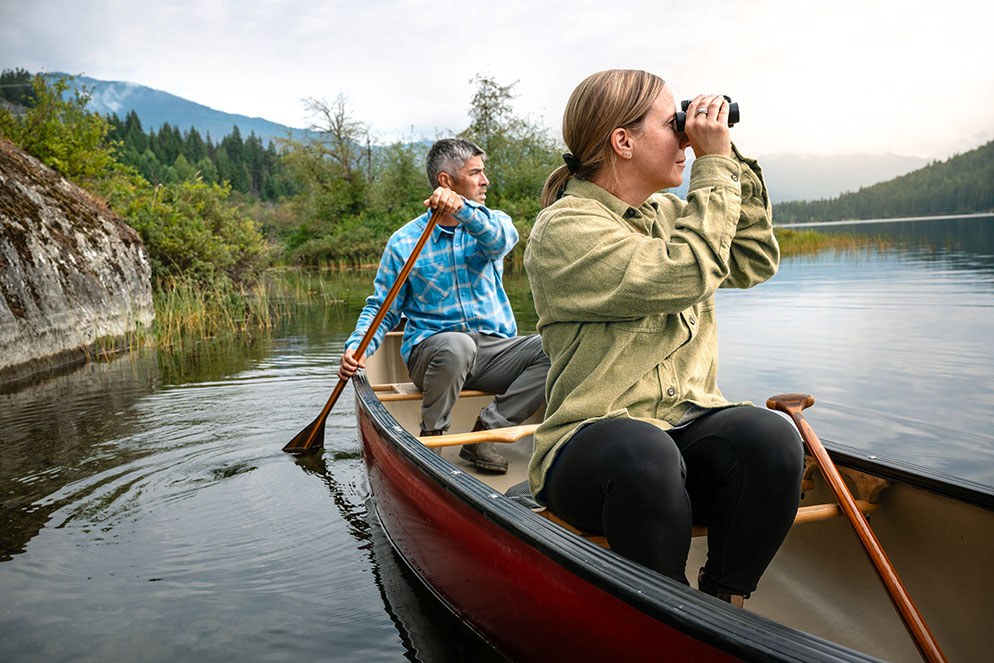How to Choose the Right Binoculars for You
Selecting appropriate binoculars can greatly improve the quality of your observations. No matter if you are hiking, birding, taking in the night sky, or watching a live event, a quality binocular can enhance the experience. Many models are available, and making an informed decision means learning about the little things that distinguish one model from another. It's important to think about what you need and make your pick.
What Do Binocular Numbers Mean?
Prior to delving into the particulars of binocular types and attributes, it's crucial to understand that the numbers found on all binoculars, like 8x42 or 10x50, are not arbitrary numbers; they are pivotal benchmarks of their capability.
The number at the beginning shows how much closer the subject will look and appear. For instance, an 8x magnification or power means that a subject will appear 8 times closer than it does with the naked eye.
The second figure represents the diameter of the objective lens in millimeters. A bigger lens, such as the 42mm in 8x42, enables more light to come in, resulting in better visibility in low-light environments.
Understanding these figures is important because they have a direct bearing on how well the binoculars will fit for a particular activity or under particular circumstances. High magnification will provide a close view of distant objects, but at the expense of a narrow field of vision and a greater sensitivity to hand movement. Large objective lenses enhance the ability to gather light in dim conditions, but these lenses will add to the bulk and heft of the binoculars.
Prisms of Binoculars: Roof Prism or Porro Prism?
Binoculars are classified into Roof prism and Porro prism. Roof prism binoculars are very compact and quite robust, making them ideal for travel and outdoor activities. However, these are generally more costly than Porro prism models.
On the other hand, Porro prism binoculars generally offer a wider field of view and will produce a more realistic 3D view. These may not be as compact as a roof prism, but they are usually more budget-friendly and are great for stationary use when you won’t be hiking for hours with them around your neck.
Binocular Lens & Prism Coating: Types & Benefits
Another key component in the effectiveness of binoculars in varying light situations, is lens and prism coatings, which can significantly enhance light transmission, reduce glare and enhance clarity. These coatings include anti-reflective coatings, mirror coatings, and phase-correction coatings, among others, and substantially contribute to the optimization of the visual experience.
Durability and Comfort
Finally, the build quality and ergonomics of binoculars affect their longevity and how enjoyable they are to use. Waterproofing, Fog-Proofing, weigh grip and ease of focus are important considerations.
Choosing the Right Pair of Binoculars for the Right Activity
Matching your planned activities with the characteristics of your binoculars is essential to experience your best possible viewing experience. Whether you are watching flying birds, gazing at the stars or sports, it is crucial to have thorough knowledge of the connection between the binocular’s power, the diameter of the objective lens, and the field of view you need from your binoculars. For example, if you are planning on low light expeditions a binocular with a wide objective lens such as an 8x42 or 10x42 is ideal. Or if you need something more compact for travel 8x30 should be suitable.
Conclusion
Choosing the appropriate binoculars is more complicated than just grabbing the first one you see. By understanding how to read their specifications and how they correspond to your specific viewing needs, you can choose binoculars that elevate your experiences, whether you're exploring the wilderness or taking in a game. Once you have this information in hand, you can confidently launch your next expedition.
Explore Our Full Range of Binoculars for Your Outdoor Adventure!




